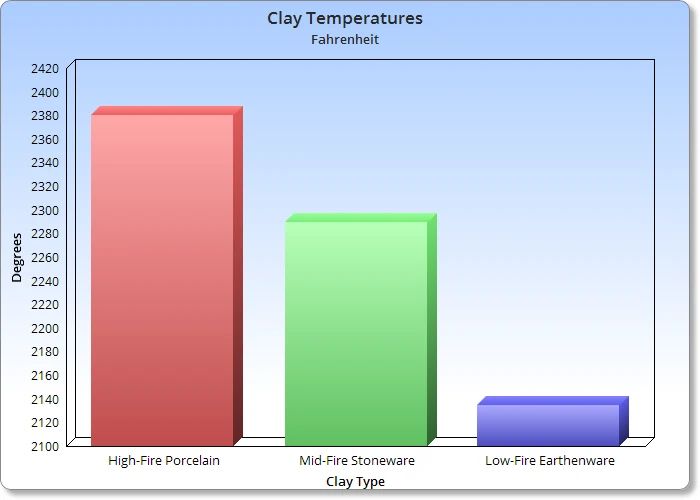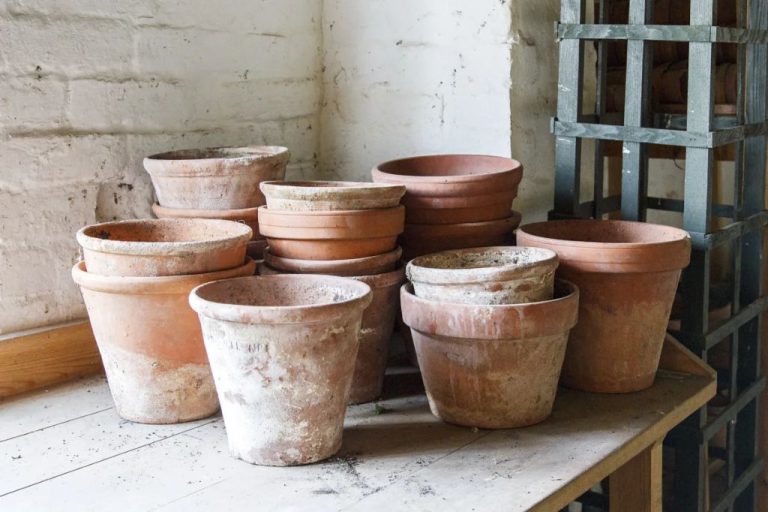Is Terracotta Clay Good For Cooking?
Terracotta clay is an ancient material that has been used for pottery and cooking vessels for thousands of years. The term “terracotta” comes from the Italian words “terra” meaning earth, and “cotta” meaning cooked. It refers to a type of earthenware clay that has been fired at high temperatures to harden it.
Terracotta clay is made from naturally occurring clay deposits that are rich in iron and other minerals. It has a distinctive reddish-orange color that develops as a result of being fired at temperatures between 1000 – 1300°C. The high firing temperature causes physical and chemical changes in the clay that result in its hardness, durability, and porous texture.
Thanks to its longevity, porosity, thermal properties, and natural non-stick surface, terracotta has been a popular choice for cookware throughout history. From ancient Rome to modern Italy, clay cookware has been passed down through generations and valued for how it enhances flavors and cooking results.
History of Cooking With Terracotta
Terracotta clay has been used for cooking and food storage for thousands of years. The earliest known terracotta pots date back to 29,000–25,000 BCE in China. Terracotta cooking vessels were also used extensively by ancient cultures in Europe, Africa, Asia, and the Americas.
In many early civilizations, terracotta was the main material used for pots, bowls, plates, and other cooking vessels. The ancient Romans were especially known for their advanced pottery skills and made many types of terracotta cookware.
Terracotta’s popularity stemmed from its availability, durability, heat retention abilities, and ease of cleaning. Before metal cookware became commonplace, nearly all stews, baked dishes, and other foods were cooked in simple terracotta pots.
Today, terracotta cookware is still used in many traditional cuisines around the world. In places like North Africa, Spain, Italy, and Latin America, iconic terracotta pots are used to slow cook stews, bake casseroles, and roast or steam various foods.
Properties of Terracotta
Terracotta clay has some unique properties that make it well-suited for cooking applications:
Porosity
Terracotta is porous, which allows steam and moisture to pass through the material during cooking. This allows food to cook evenly without becoming soggy. The porosity also absorbs excess moisture from the food.
Heat Retention
Terracotta has good heat retention properties. Once heated up, it retains heat effectively to provide steady, even cooking. The natural clay material is resistant to thermal shocks so it won’t crack under rapid temperature changes.
These natural properties of terracotta clay allow it to excel as a cooking material, especially for dishes that require slow, even heating like stews, curries, rice, and beans.
Benefits of Cooking With Terracotta
Terracotta clay offers some unique benefits for cooking that makes it a top choice for many chefs and home cooks alike. Here are some of the main advantages of using terracotta cookware:
Natural Material
Terracotta is an all-natural clay material that contains no chemicals, coatings, or synthetic materials. This makes it safe for cooking and ideal for those looking to avoid potential toxins from metal or non-stick cookware. The natural clay also allows steam and moisture to escape through the porous walls of the cookware.
Retains Heat and Moisture
The clay walls of terracotta pots and pans retain heat very well compared to other materials. This allows them to cook food more evenly once heated up. The moisture retention properties help keep food from drying out too quickly when cooking. Soups, stews, risottos and other dishes that require slow, even cooking do exceptionally well in terracotta.
Enhances Flavors
Many chefs praise terracotta cookware for naturally enhancing the flavors of dishes. The clay seems to absorb and distribute aromas in a way that brings out more depth and complexity in the finished meal. The enhanced steaming and moisture retention also prevent food from losing its subtle flavors from overcooking. It’s a great choice for braises, soups, baked dishes and more.
Downsides of Cooking With Terracotta
Although terracotta cookware provides some unique benefits, there are a few downsides to consider as well:
Brittle
Terracotta clay is porous and can become brittle with age and use. Dropping or impacting terracotta cookware can cause it to chip or crack. Handle with care.
Heavy
Due to the dense clay material, terracotta pots and pans can be quite heavy compared to other cookware. This makes them more difficult to maneuver while cooking.
Requires Seasoning
Before first use, terracotta cookware must be seasoned by coating with oil and heating gradually to seal the pores. Over time, the seasoning may need to be reapplied after washing to keep the cookware nonstick.
Best Uses for Terracotta Cookware
Terracotta cookware is especially well-suited for certain cooking tasks. Here are some of the best uses for terracotta pots and pans:
Baking Bread
The porous nature of terracotta helps create an ideal environment for baking bread. Terracotta evenly distributes heat and absorbs moisture from the dough. This allows the bread to develop a thick, crunchy crust and soft, fluffy interior.
Braising Meats
Terracotta’s heat retention properties make it excellent for braises and stews. Place your terracotta pot or pan in the oven or on the stovetop to let it heat up. Then add your ingredients and let them cook low and slow, with the terracotta evenly distributing heat and intensifying flavors.
Stews
Just like braises, terracotta is great for simmering stews. The pot helps keep an even temperature and melds flavors together. Use your terracotta pot for hearty stews, chilis, and curries that benefit from gentle, steady cooking.
Proper Care and Maintenance
Terracotta cookware requires some special care and maintenance to keep it in good condition. Here are some tips for seasoning, cleaning, and storing your terracotta pots and pans:
Seasoning
Before first use, terracotta cookware should be seasoned to create a natural non-stick patina. To season, coat the inside of the cookware with a thin layer of oil and bake it in the oven at 200°F for about an hour. Let it cool completely before using. The oil fills in the pores and creates a smooth cooking surface.
Cleaning
After each use, wash terracotta gently by hand with warm water and a soft sponge or cloth. Avoid abrasive scouring pads or cleaners which can damage the seasoned surface. If food is stuck on, fill the cookware with warm water and let it soak for a few minutes before scrubbing lightly. Be sure to dry it thoroughly.
Storing
Store terracotta cookware in a cool, dry place. Do not expose it to drastic temperature changes which can cause cracking. If storage space is limited, stack carefully with towels between the pieces to prevent scratching the glaze.
With the proper care, high quality terracotta cookware can last for many years of cooking enjoyment.
Top Terracotta Cookware Brands
When shopping for high-quality terracotta cookware, three premium French brands stand out:
Emile Henry
Founded in 1850 in Burgundy, France, Emile Henry is known for its elegant and durable ceramic bakeware and cookware. Their terracotta line features items like tagines, braisers, and flameproof casserole dishes. Emile Henry clay is resistant to cracking and chipping. Their signature burgundy color comes from the natural clay they source.
Staub
Staub, also from France, offers cast iron and ceramic cocottes, baking dishes, and ramekins. Their terracotta range has a matte black enamel interior and a distressed terracotta exterior. Staub terracotta retains and distributes heat evenly. The black matte interiors won’t absorb odors or flavors either.
Le Creuset
Known for their iconic colorfully-enameled cast iron, Le Creuset also has a line of high-fired stoneware cocottes and ramekins. Available in rich terracotta and cream glazes, their pieces transition beautifully from stove to table. The enamel resists staining and dulling over time.
When it comes to beautiful, heirloom-quality terracotta for cooking and baking, these three French brands deliver exceptional craftsmanship and value.
Cost Considerations
Terracotta cookware is generally more affordable than other premium cookware materials like cast iron, stainless steel, or ceramic. A basic terracotta pot or pan can cost between $10-$50 depending on the size and brand. Larger, more ornate ovenware pieces like tagines or romertopf baking dishes may cost $50-$150.
Compared to enameled cast iron from brands like Le Creuset, terracotta is significantly cheaper for a similar sized pot or Dutch oven. For example, a 5 quart Le Creuset Dutch oven can cost $300+ while a terracotta version is usually under $100.
However, because terracotta is porous it requires more careful use and maintenance. It can crack or chip more easily than materials like stainless steel or enameled cast iron. So while the upfront cost is less, terracotta may need replacing more frequently with heavy use.
Overall, terracotta represents an affordable and attractive option for oven-to-table cooking compared to premium cookware lines. With proper care it can last for many years, providing excellent value for cooks looking for natural clay cooking vessels.
Conclusion
Terracotta clay offers some unique benefits for cooking, but also has some downsides to consider. On the pro side, terracotta distributes heat evenly, can help food retain moisture and nutrients, and adds beneficial minerals to dishes. The natural nonstick surface also allows for oil-free cooking. However, terracotta cookware requires more careful handling to avoid cracking or chipping. It’s also heavier than other materials and not suitable for all cooking methods. Maintenance is also important to season the clay and prevent staining. Overall, terracotta excels for slow, gentle cooking methods like braising and stewing. It adds a nostalgic, earthy appeal to cooking while providing some health advantages. Just be prepared for extra care with handling and upkeep. If used properly, a terracotta pot can provide many years of flavorful, nourishing meals.


